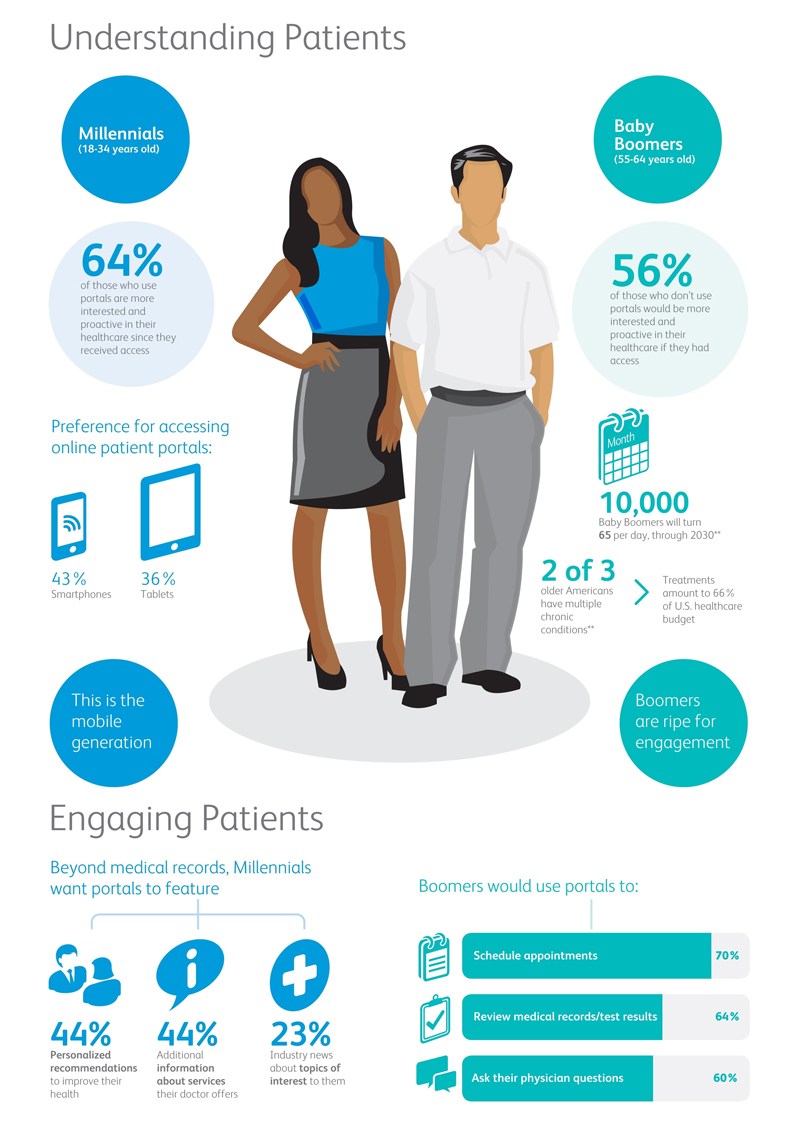In a time where good quality, reliable health care comes with a hefty price-tag, patients are more skeptical about the reliability of health providers. And this is not just a problem that is faced by the uninsured. Healthcare costs are mounting, so much so that footing the cost for hospitalizations, treatments and/or surgical procedures have led many families to bankruptcy. The onus to ensure patient satisfaction and instill trust therefore squarely rests on providers.
It, therefore, makes perfect sense that more and more providers are seeking outpatient engagement platforms in addition to their hospital/clinic management system. Aimed at improving health outcomes and convenience, patient engagement platforms have helped healthcare providers ensure patient satisfaction. In the long run, better engagement ensures fewer complications and saves healthcare costs for patients. Happy patients would also translate to more referrals, which means increased revenue for providers- a win-win situation!
What does it take to make your patients happy
A better system of communication with physicians is primarily what patient are hoping for, for transparency in their treatment and also so that they may be part of the decision-making when it comes to their care. Making informed decisions about their care ensures that patients have better health outcomes and fewer health complications. For this, patients are even willing to use information technology to ensure better engagement.
Given that most users use mobile or digital solutions for many aspects of daily life- like ticketing, e-commerce, bill payments etc, patient engagement tools should work to leverage this behavior for communication and collaborative care between patients and their health providers.

The good thing is that most healthcare organizations have recognized the need for better communication and cooperation between their patients and doctors and already have some form of platform or portal to facilitate this engagement. In fact, hospitals spend thousands of dollars every year for websites, portals, and EHR systems but fail to utilize them correctly. This probably explains the reason for the “failure” of patient engagement.
Return on Investment
The Healthcare Information and Management Systems Society (HIMSS) recommends that health providers evaluate ROI of patient engagement systems based on:
- Efficiency savings
- Improved outcomes of care
- Additional revenue generated
- Non-financial gains ( increased patient satisfaction, decreased provider time at work, increased employee satisfaction)
- Increased knowledge of the patient population
Studies have shown that most patients are willing to pay for patient engagement services, provided it is from their providers. Services such as online/video consultations, offered by ContinuousCare, offers providers with an added revenue stream as it helps patients who would otherwise be unable to visit them to connect with their care providers and ensure continuity of care.
Additionally, features such as appointment reminders ensure that patients never miss their appointments, reducing no-shows and limiting losses to the practice – estimated to be millions of dollars annually.
Collaborative care through remote health monitoring programs gets patients to be actively involved in their care and is particularly beneficial to ensure continuity of care for chronic illnesses. For healthcare providers, this means that patients remain committed to their treatment plan, have variations in their health monitored continuously and subscriptions to these plans offer providers an additional source of revenue.
If implemented correctly, patient engagement tools can make your practice more profitable and help providers understand their patients better, to deliver better health care.
Have you set up a tool for patient engagement yet?



